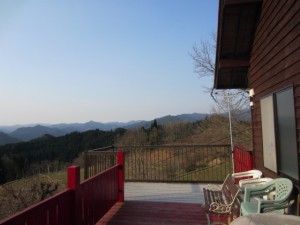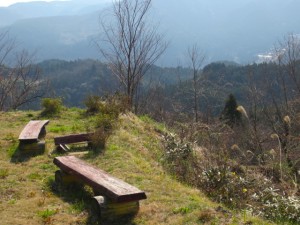One might wonder how we ended up in a small village high up in the mountains (600 m above sea level). Well, as a volunteer at the Kokusai Center in Kitakyushu, I came to know one of the city employees.
She is retired now and lives with her husband in a log cabin in Nakatsue. With her help, we secured a fairly inexpensive overnight deal in a Minpaku. Our charge was 3000 Yen per person (about 30 euro per person).
What is a Minpaku you might ask. Definition of Minpaku taken from Kyushu Educational Travel Net:
This Minpaku experience, which allows visitors to experience rural culture as typified by local cuisine, beautiful scenery and abundant nature, has been becoming popular. In Kagoshima Prefecture, a NPO organization coordinates more than 700 individual homes.
Staying in a minpaku is the cheapest form of accommodation, next is the Minshuku, topped by a Ryokan in convenience and comfort.
With our Minpaku arrangement, we had a whole log cabin to ourselves, it came without breakfast (instant coffee and tea were available), and it was just great!

Minpaku log cabin
For some reason, I did not take any photos on the inside. Our minpaku was fully equipped with heaters, flat screen TV, and all the amenities one could ask for.
Come warmly dressed though as these arrangements high up in the mountains can be rather cold even in April. The thermometer read – 1°C at 10 p.m.

Mountains of Hita, Oita-ken
On my next trip to Kyushu, I will book a Minpaku again.



